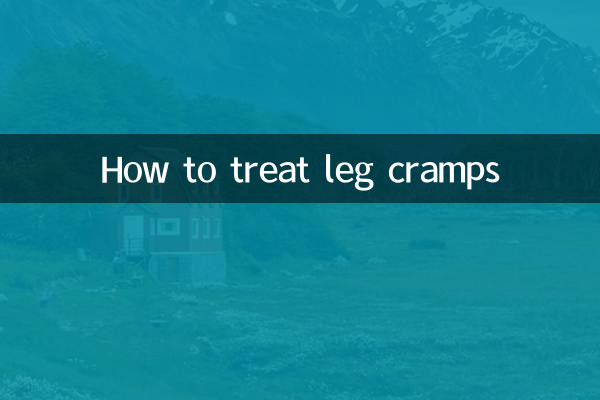How to treat leg cramps
Leg cramps are a common muscle spasm that usually occurs at night or after exercise and is characterized by sudden tightness and pain in the calf or thigh muscles. Although leg cramps are usually short-lived, frequent episodes may affect quality of life. This article will combine the hot topics and hot content on the Internet in the past 10 days to provide you with treatment methods and preventive measures for leg cramps.
1. Common causes of leg cramps

The occurrence of leg cramps is related to a variety of factors. The following are common causes that have been hotly discussed on the Internet in the past 10 days:
| reason | illustrate |
|---|---|
| electrolyte imbalance | Lack of minerals such as potassium, calcium, and magnesium, especially electrolyte loss caused by heavy sweating after exercise. |
| muscle fatigue | Excessive exercise or standing for long periods of time can cause excessive muscle tension. |
| poor blood circulation | Sitting for long periods of time or wearing tight clothing affects blood circulation in the legs. |
| dehydration | Insufficient fluid intake leads to muscle cramps. |
| pregnancy | Pregnant women are more susceptible to leg cramps due to weight gain and hormonal changes. |
2. Treatment methods for leg cramps
Based on popular discussions in the past 10 days, here are several effective treatments:
| method | Specific operations |
|---|---|
| stretch muscles | When you have cramps, straighten your legs immediately, grab your toes with your hands and pull them toward your body to relieve the cramps. |
| Hot or cold compress | Hot compresses can relax the muscles, and cold compresses can relieve pain. The choice is based on personal circumstances. |
| massage | Gently massage the cramped area to promote blood circulation and relieve pain. |
| Supplement electrolytes | Drink sports drinks containing electrolytes or supplement with calcium and magnesium tablets. |
| drug treatment | In severe cases, over-the-counter pain relievers such as ibuprofen can be taken, but only as directed by your doctor. |
3. Preventive measures for leg cramps
Prevention is better than cure, here are the ways to prevent leg cramps that are hotly discussed across the internet:
| measure | illustrate |
|---|---|
| drink more water | Maintain adequate fluid intake every day, especially before and after exercise. |
| balanced diet | Eat foods rich in potassium (bananas, potatoes), calcium (milk, soy products), and magnesium (nuts, green leafy vegetables). |
| moderate exercise | Avoid excessive exercise and stretch before and after exercise. |
| Improve sleeping posture | Keep your legs relaxed while sleeping to avoid compression. |
| Wear comfortable shoes | Avoid wearing high heels or tight shoes for long periods of time. |
4. Recent hot topics: folk remedies and scientific verification of leg cramps
In the past 10 days, folk remedies for leg cramps have sparked heated discussions on social media. Here are several widely discussed methods and their scientific basis:
| folk remedies | Scientific verification |
|---|---|
| Be jealous | There is no clear scientific basis for this, and acetic acid may cause distraction by irritating the digestive system. |
| eat banana | Bananas are rich in potassium, which can really help prevent cramps caused by electrolyte imbalances. |
| Soak your feet | Soaking your feet in warm water can promote blood circulation and relieve muscle tension, which has certain effects. |
5. Summary
Although leg cramps are common, their frequency can be effectively reduced through scientific treatment and preventive measures. If you experience frequent leg cramps, it is recommended to consult a doctor to rule out underlying medical conditions. I hope this article can provide you with practical help!

check the details

check the details